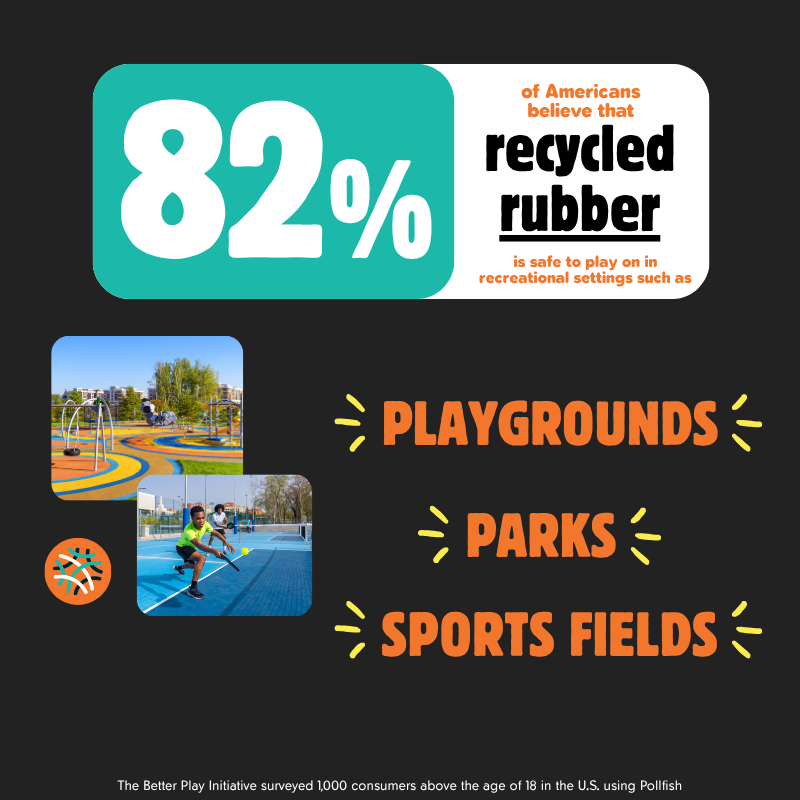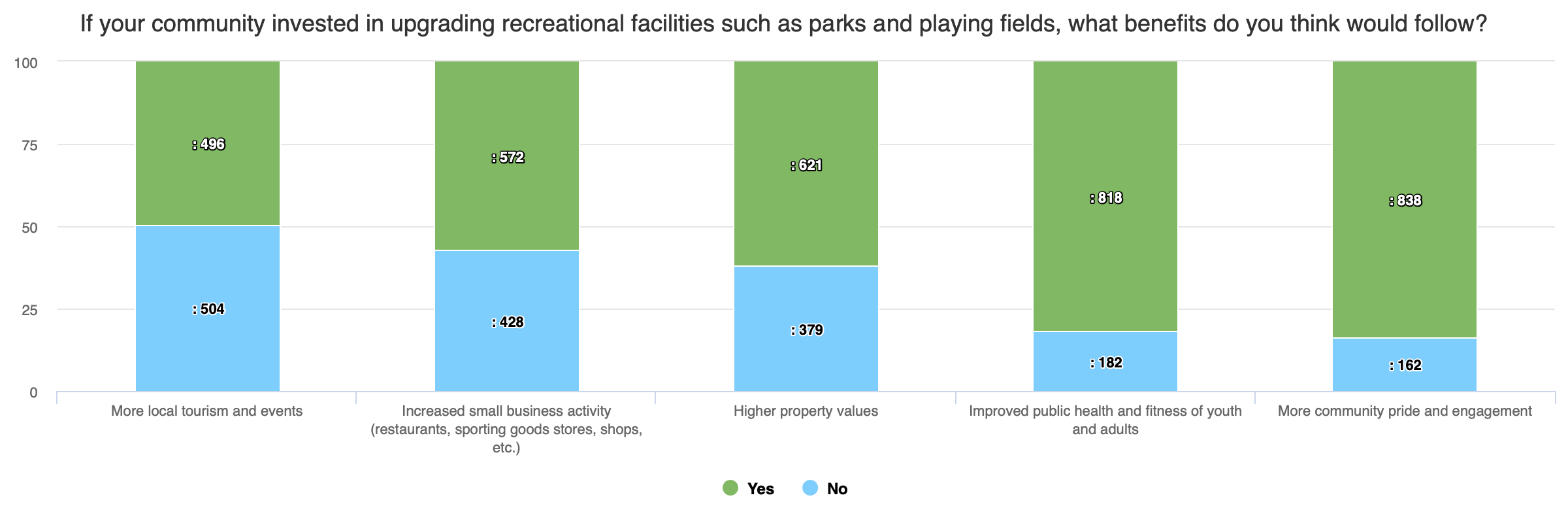Better Play Initiative Survey: Americans Support Recycled Rubber for Parks and Playing Fields


In recent years, artificial turf using recycled rubber has become a centerpiece at schools and local recreational facilities, as local administrators and parks leaders seek to provide more opportunity for high-quality play. Discussions are ongoing in many localities around the use of artificial turf vs. grass, taking into account safety, environmental, and accessibility concerns.
The Better Play Initiative (BPI) recently conducted a nationwide consumer survey on this topic. What we’ve found is that a strong majority of Americans have embraced the use of recycled rubber and artificial turf and see it as a safe and sustainable option in their communities that promotes accessibility and utilization..
Eighty two percent of Americans believe that recycled rubber is safe to play on in recreational settings. And, given the opportunity, 72% of Americans would choose turf over grass if their community has the opportunity to upgrade local fields and playgrounds.

These findings reflect a growing recognition of how difficult it is to maintain grass fields and keep spaces safe and accessible. Two-thirds of adults reported that youth in their communities have missed out on opportunities to play due to mud, standing water, or damaged fields.
Support for recycled rubber remains strong as respondents are informed about the latest scientific research, particularly a 2024 U.S. Environmental Protection Agency study and a 2025 (draft) study by the California Office of Health Hazard Assessment (CalOEHHA). When considering the latest science, Americans strongly support using these surfaces to keep their communities active and encourage healthy play and gathering.
Below is a look at what BPI’s survey found and how families and community members see the ongoing artificial turf debate.
Safety ranked as the top priority for respondents as the feature they value most in their parks and playing fields. By large margins, Americans reported that they are open to and support surfaces using recycled rubber, particularly when they learn that government bodies have studied the issue and found no significant health concerns.
BPI provided respondents with key findings from the 2025 draft study from the California Office of Health Hazard Assessment (CalOEHHA). With these findings in mind, 73 percent of respondents said that they would support the use of artificial turf in their communities.
The CalOEHHA study represents the most comprehensive report to date on the safety of recycled rubber. The researchers, upon analyzing 35 synthetic turf fields across California, found “no significant risks” to players, coaches, fans, and others using the fields.
The findings from CalOEHHA are consistent with the report published in 2024 by the EPA, which found that exposures from recycled rubber are “likely limited” and similar to natural grass. Their comprehensive, two-part study, conducted over the span of years, compared athletes playing on turf with those playing on grass. Using biomarkers to compare exposure levels, the researchers found no significant difference between turf with recycled rubber and grass.
Ultimately, 82 percent of respondents said that they see surfaces that use recycled rubber as safe. Communities are looking for surfaces that remain playable after inclement weather, and also decrease injuries from falls. In this regard, too, respondents reported that they trust surfaces that use recycled rubber compared to alternatives.
Communities face the challenge of accommodating a wide variety of sports and activities. At schools around the country, turf with recycled rubber infill has become the gold standard — making possible back-to-back practices and games throughout the year and helping more athletes get on the field.
Survey findings make clear that Americans see accessibility as top-of-mind when they think about their local parks and playgrounds. Sixty-one percent of respondents report that youth in their communities have missed out on opportunities to play due to mud, standing water, or damaged grass. When inclement weather or overuse renders fields unplayable, communities miss out on hours of playing time.
Respondents said they would support turf installation in their communities if the following were demonstrated:
With upgraded facilities in their communities, 58% believe small business revenue would increase and 62% believe property value would go up — a result of increased tourism from hosting games and tournaments.

Localities around the country have experienced a boost when they have installed upgraded surfaces, attracting increased development and upping local tourism. When Lincoln Park Sports Complex in Indiana turned their grass baseball fields into turf, they gained a longer season and increased event count — leading to an estimated economic impact of $950,000 each year. Similarly, Brown County, Wisconsin projected an additional 1,300 hotel stays and an impact of more than $2.3 million as a result of new turf soccer fields.
Americans see these upgraded surfaces as valuable investments in the community. With upgrades to local parks and playgrounds, BPI found, 82 percent of Americans believe that their community’s public health and fitness will improve.
The Bottom Line: Americans support the use of recycled rubber in parks and playing fields. They see a need in their communities for recreational spaces that endure for longer and provide more opportunity for play. When informed of the latest government research, their support remains strong. They believe upgraded parks drive increased community use, economic development, and improved public health.
These findings demonstrate that amid ongoing debates, Americans stand by the use of parks and playing fields with recycled rubber. With safety front of mind, they prioritize surfaces that they can trust to provide safe, sustainable and accessible play.